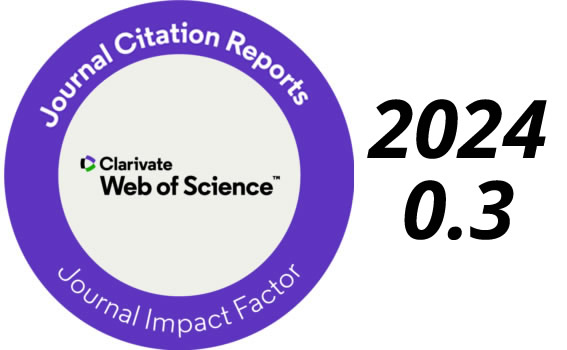Estimation of dam volume using remote sensing and Machine Learning
DOI:
https://doi.org/10.24850/j-tyca-2025-06-02Keywords:
Machine Learning, aquatic lily, dam volume estimation, water indices, Sentinel 2 imageAbstract
In Mexico, where the most significant water consumption sector is agriculture, and due to the increasing demand for food, it is necessary to maintain a proper balance between agricultural production and water consumption. In this study, with the assistance of Sentinel 2 images, Machine Learning models were developed to estimate the surface area and volume of the Manuel Ávila Camacho (Valsequillo) dam in Irrigation District 030, which receives wastewater, leading to the proliferation of aquatic lily. There are water indices such as NDWI, NDWIMcfeeter, NDWIGao, NDWIXu, AWEInon-shadow, AWEIshadow, and ICEDEX, which enable the discrimination of water bodies through the use of satellite images. However, in this case, the use of these indices results in confusion between the lilies and natural vegetation. The training was conducted using the values of the aforementioned indices and the RGB, NIR, and SWIR layers at the pixel level, and the accuracy results obtained were as follows: Linear discrimination model at 98.1 %, decision trees at 99.2 %, and logistic regression at 98.5 %. With these models, it was possible to estimate the surface area of the dam's water body. Using the graph of the dam's capacity areas, a quadratic function with an R-squared value of 0.9988 was generated, where volume is a function of area, and the dam's volume was estimated, with an average difference of 8.5 % compared to the linear discrimination model.
References
Ariza, A., García, J. S., Rojas, B. S., & Ramírez, D. M. (2013). Desarrollo de un modelo de corrección de imágenes de satélite para inundaciones: (CAIN, corrección atmosférica e índices de inundación). Bogotá, Colombia: Centro de Investigación y Desarrollo en Información Geográfica del IGAC, UNSPIDER IGAC. Recuperado de https://www.researchgate.net/publication/313346186_Desarrollo_de_un_modelo_de_correccion_de_imagenes_de_satelite_para_inundaciones_CAIN_-_Correccion_Atmosferica_e_Indices_de_Inundacion
Bonilla, F. M., Silva, G. S., Cabrera, M. C., & Sánchez, T. R. (2013). Calidad del agua residual no entubada vertida por dos parques industriales en la ciudad de Puebla, México. Revista Iberoamericana para la Investigación y el Desarrollo Educativo, 4(7), 1-36. DOI: 10.23913/ride.v4i7.83
Chucos, B. N., & Vega, V. E. (2022). Evaluación de algoritmos de machine learning en la clasificación de imágenes satelitales multiespectrales, caso: amazonia peruana. Ciencia Latina, Revista Multidisiplinar, 6(1). DOI: 10.37811/cl_rcm.v6i1.1843
Chul, K. B., Hun, K. H., & Yeal, N. J. (2015). Classification of potential water bodies using Landsat 8 OLI and a combination of two boosted random forest classifiers. Journal Sensors, 15(6), 13763-13777. DOI: 10.3390/s150613763
Chuvieco, S. (2002). Teledetección ambiental: la observación de la Tierra desde el espacio. Barcelona, España: Ariel.
Conagua, Comisión Nacional del Agua. (2013). Sistema Nacional de Información del Agua. Monitoreo de las principales presas de México. Recuperado de https://sinav30.conagua.gob.mx:8080/SINA/?opcion=monitoreo
Conagua, Comisión Nacional del Agua. (2018). Atlas del agua en México, edición 2018. Recuperado de https://files.conagua.gob.mx/conagua/publicaciones/Publicaciones/AAM2018.pdf
Feyisa, G., Meilby, H., Fensholt, R., & Proud, S. (2014). Automated Water Extraction Index: A new technique for surface water mapping using Landsat imagery. Remote Sensing of Environment, 140, January 2014, 23-35.
Fisher, A., Flood, N., & Danaher, T. (2016). Comparing Landsat water index methods for automated water classification in eastern Australia. Remote Sensing of Environment, 175, 167-182. DOI: 10.1016/j.rse.2015.12.055
Gao, B. C. (1996). NDWI - A normalized difference water index for remote sensing of vegetation liquid water from space. Remote Sensing of Environment, 58, 257-266. DOI: 10.1016/S0034-4257(96)00067-3
McFeeters, S. K. (1996). The use of the Normalized Difference Water Index (NDWI) in the delineation of open water features. International Journal of Remote Sensing, 17(7), 1425-1432. DOI: 10.1080/01431169608948714
Rouse, J. W., Hass, R. H., Deering, D. W., & Schell, J. A. (1974). Monitoring the vernal advancement and retrogradation (Green wave effect) of natural vegetation. Monterey, USA: Remote Sensing Center.
Xu, H. (2006). Modification of normalised difference water index (NDWI) to enhance open water features in remotely sensed imagery. International Journal of Remote Sensing, 27, 3025-3033. DOI: 10.1080/01431160600589179
Downloads
Published
How to Cite
Issue
Section
License
Copyright (c) 2025 Tecnología y ciencias del agua

This work is licensed under a Creative Commons Attribution-NonCommercial-ShareAlike 4.0 International License.
By Instituto Mexicano de Tecnología del Agua is distributed under a Creative Commons Attribution-NonCommercial-ShareAlike 4.0 International License. Based on a work at https://www.revistatyca.org.mx/. Permissions beyond what is covered by this license can be found in Editorial Policy.









